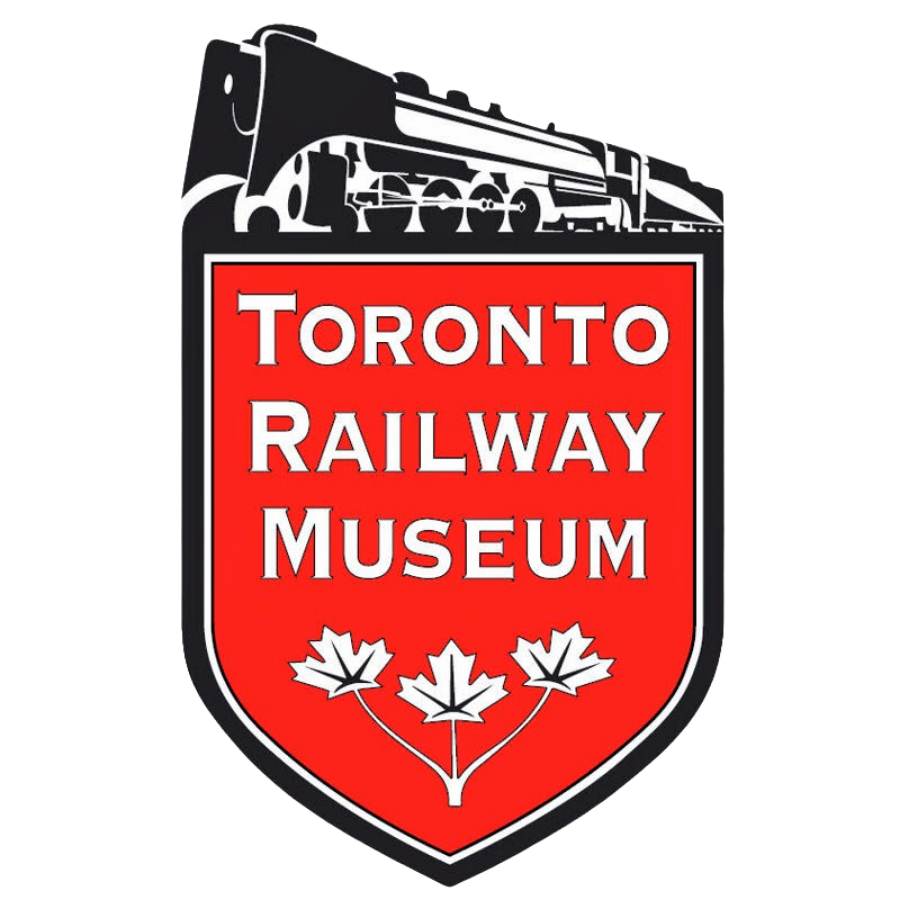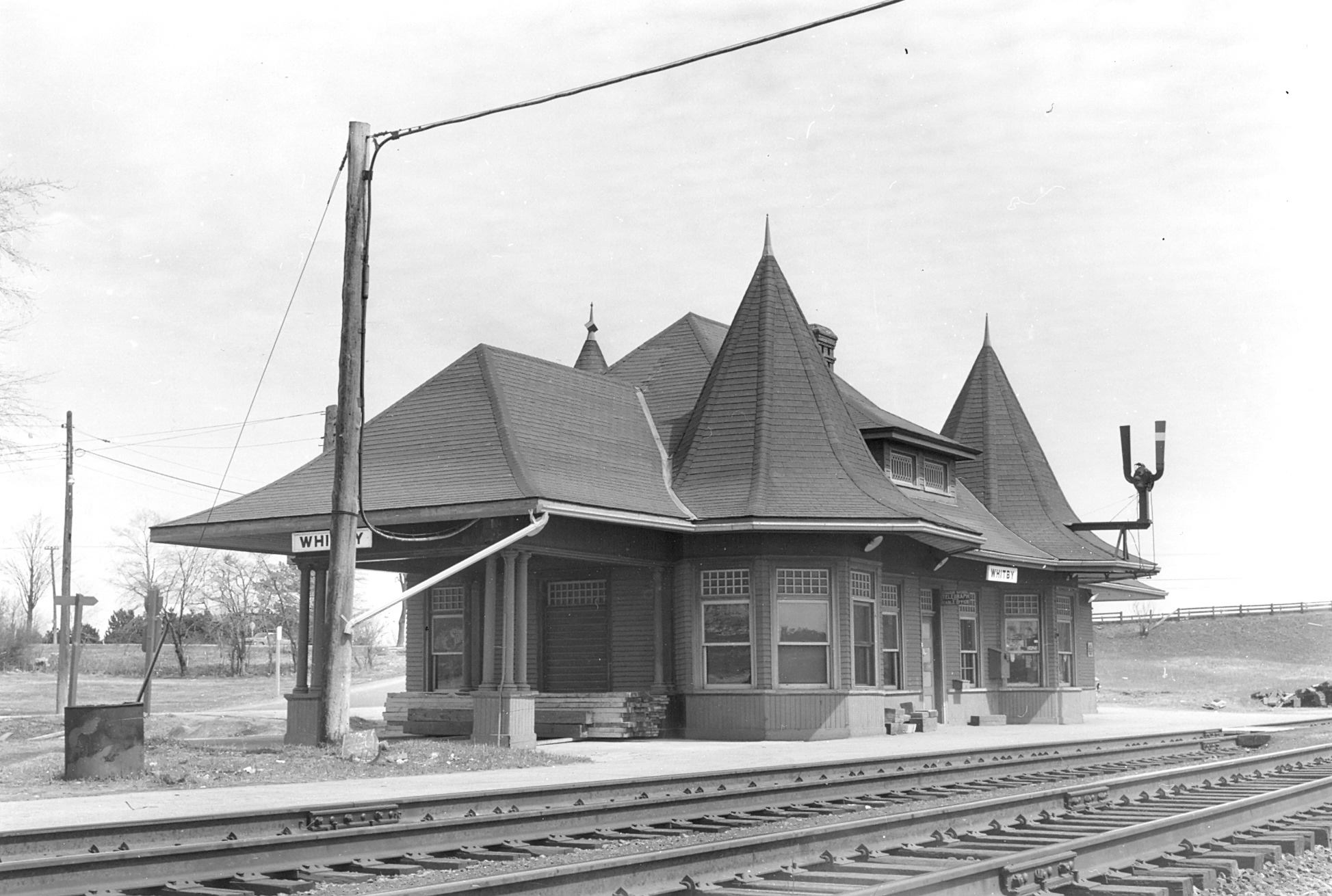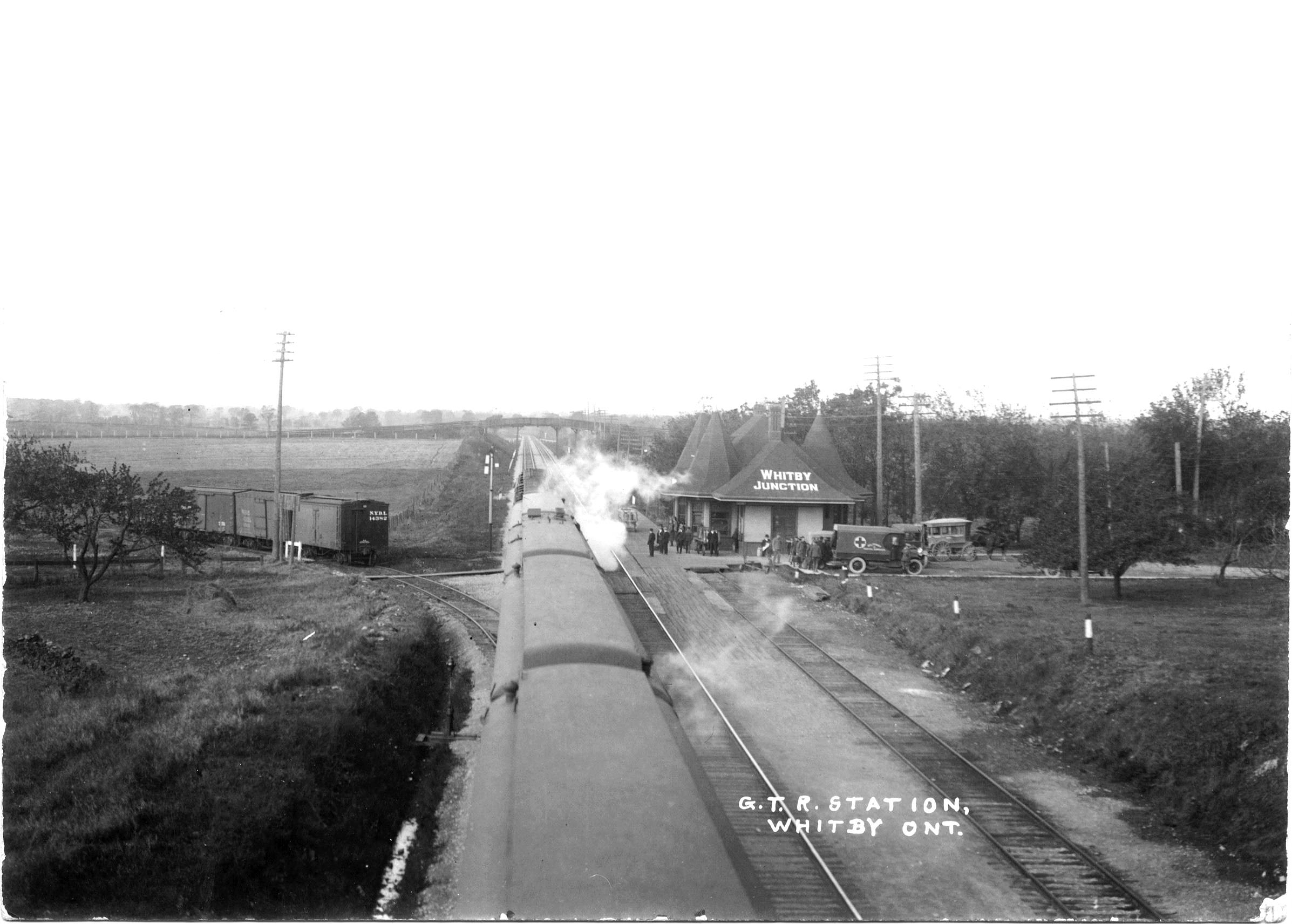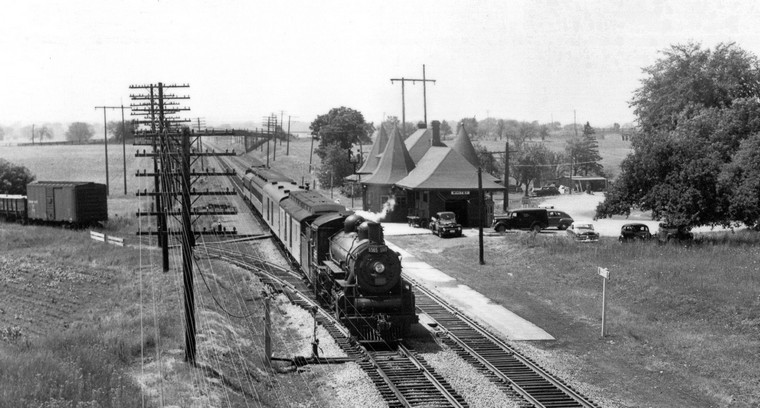Summary
Before the arrival of its first railway, what is now the Town of Whitby was originally three separate communities. There was Port Whitby near the natural harbour on Lake Ontario, Perry’s Corners where downtown Whitby is located today, and Hamer’s Corners just to the east. Whilst construction of the Grand Trunk Railway was underway between Toronto and Montreal, the three communities amalgamated into the Town of Whitby in 1855. A station called Port Whitby was built on the north side of the tracks at the intersection of Galt Street (previously Station Street) and Grand Trunk Street, and the first train from Toronto arrived on August 11th, 1856. However, the train only went as far as Oshawa and regular through service did not commence until October 27th of the same year. While no photos of this station are known to exist, it most likely followed the standard design the Grand Trunk applied to all stations on the Toronto-Montreal line upon its opening. Surviving examples of this design can be found today in Port Hope, Napanee, and Prescott among others. By the time of Canada’s confederation in 1867, Port Whitby Station saw a total of six trains per day. In 1871, the Port Whitby & Port Perry Railway crossed the Grand Trunk Railway at grade just east of Port Whitby Station. As a result, the station’s name was changed to Whitby Junction at some point over the course of the next two decades. Through a series of mergers, the former Port Whitby & Port Perry line fell under ownership of the Grand Trunk in 1884.
Between 1881 and 1903, the Grand Trunk attempted to build a second main track along the entire Toronto-Montreal line. This work did not reach Whitby until 1901, but the ensuing two years would involve some of the most significant changes since the Grand Trunk’s arrival in 1856. Part of the work involved the flattening of areas with a significant uphill or downhill grade, as they could cause broken knuckles on longer trains. The original Whitby Junction Station was located quite close to Pringle Creek, and so the terrain was naturally lower there than in the surrounding areas. The station was dismantled and a new embankment was created while the second track was laid. A new station was opened less than a kilometre west at Byron Street in 1903. It was noticeably larger than the original station and utilized several elements of Victorian architecture in its design. Unlike the limestone exterior of its predecessor, the new station was made predominantly from wood. The most striking design elements of this station were three turrets with conical “witch’s hat” roofs above each of them. By 1912, a total of twelve trains stopped at the station on a daily basis, six of which ran via the former PW&PP line. The building has more recently gained local notoriety for the unsolved murder of a telegraph operator inside the station agent’s office on December 11th, 1914.
The Grand Trunk Railway encountered financial difficulties during the early 20th century, culminating in its nationalization and subsequent absorption into Canadian National in 1923. Passenger service over the former PW&PP line ended in 1937 and the word “junction” was dropped from the station’s name shortly thereafter. During World War Two and the post-war period, service peaked at 14 trains per day but this was soon marred by the popularization of automobiles and air travel during the same period. The decline was further intensified by the completion of Highway 2A through Whitby in 1947, which was built just 150 metres north of the station. It was adapted into Highway 401 in 1952 which would end up running parallel to the railway in most places and serving many of the same communities. The highway severed Byron Street and left nearby Henry and Brock Street as the only way for the majority of Whitby residents to access the station. Service was reduced to eleven daily trains by 1961, and by 1969 it was closed to passengers altogether. A group of artists purchased the station in 1970 to prevent its demolition, and subsequently moved the structure off its foundation to the east corner of Victoria and Henry Street where it was repurposed as an art gallery. It was moved once more in 2004 to the west side of Henry Street where it’s currently located. The station was designated under the Ontario Heritage Act in 2006, and it has been beautifully restored inside and out.
GO Transit commuter service was extended to Whitby in 1988, bringing passenger rail service back to Whitby after almost two decades without. The new GO Station was built in almost the same location as its predecessor, and a pedestrian flyover to access the platform was built on the former station site. When service was extended to Oshawa in 1990, new tracks for the GO right-of-way were built across the site of the 1856 GTR station north of Grand Trunk Street.
Condensed Station Info:
| Location: | Served By: | Current State: | Date Built: | Date Demolished: |
| Galt Street and Grand Trunk Street (First) South end of Byron Street (Second) | Grand Trunk (1856 – 1923) Canadian National (1923 – 1969) | Demolished (First) Preserved (Second) | 1856 (First) 1903 (Second) | 1903 (First) N/A (Second) |






